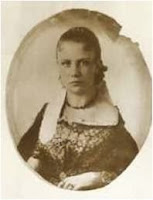When David L. Swain arrived for the first time in Chapel Hill at the start of the University of North Carolina’s 1822 spring term, he was a young man with focus and determination. He knew he wanted to study the law. Older at twenty-one than the typical freshman, he enrolled at the university to pursue that dream.
What he found, he wrote to his father George Swain back in his home in the Blue Ridge Mountains, were classmates who were not serious about their studies.
Disenchanted and eager to achieve his goal, David Swain left school and moved to Raleigh to study under Judge John Louis Taylor, a state Supreme Court justice. If he attended lectures and completed the prescribed readings, he explained to his father, Taylor “has no doubt but that he can … prepare me” for a career in the law.
George Swain was initially unhappy with his son’s decision, reminding him of all he could learn from the formal education the university offered. But by mid-July, “after having time to read your letter leisurely, and weigh your arguments,” the elder Swain agreed to David’s plan.
“I don’t however blame you for changing your mind.”
David Swain’s decision proved to be the right one. A year later, in 1823, he passed the bar exam and returned home to Buncombe County to practice law. In 1824, he was elected to the N.C. House of Commons. So exemplary was his service that he was re-elected four times, and in 1832, he became North Carolina’s twenty-sixth and at age thirty-one, its youngest governor, a position he held until late 1835, when he was named to the helm of the university following the death of its first president, Joseph Caldwell.
For the next thirty-three years, Swain led the university, even succeeding in keeping it open during the four long years of the Civil War, when fewer than twenty students were enrolled by its end in April 1865.

But it is the actions of his youngest daughter, Ella, for which Swain often has been remembered. At twenty-two, Ella fell in love with and wed the Union general whose soldiers occupied Chapel Hill that spring. Though the marriage was scandalous to family friends and neighbors, a victorious U.S. Gen. William T. Sherman gave Swain a horse and buggy as a congratulatory gift upon learning that one of his men was to marry the UNC president's daughter.
A few years later, ironically, it was in that very buggy pulled by that very horse that Swain was riding on August 11, 1868, when he was critically injured in an accident. Carried across the university’s campus on a stretcher to his home, he appeared to improve over the next two weeks. Yet on August 27, while visiting with Professor Charles Phillips, he suddenly became weak and asked to be helped back to bed. He died twenty minutes later.
As was the custom, following the August 29 funeral at his home, former Governor and University of North Carolina President David L. Swain was buried in the family’s backyard in Chapel Hill. His remains later were removed to Oakwood Cemetery in Raleigh under a marble obelisk erected by Eleanor Swain, his wife of nearly forty years.
(Editor's Note: David L. Swain was my 3rd-great-grandfather.)







